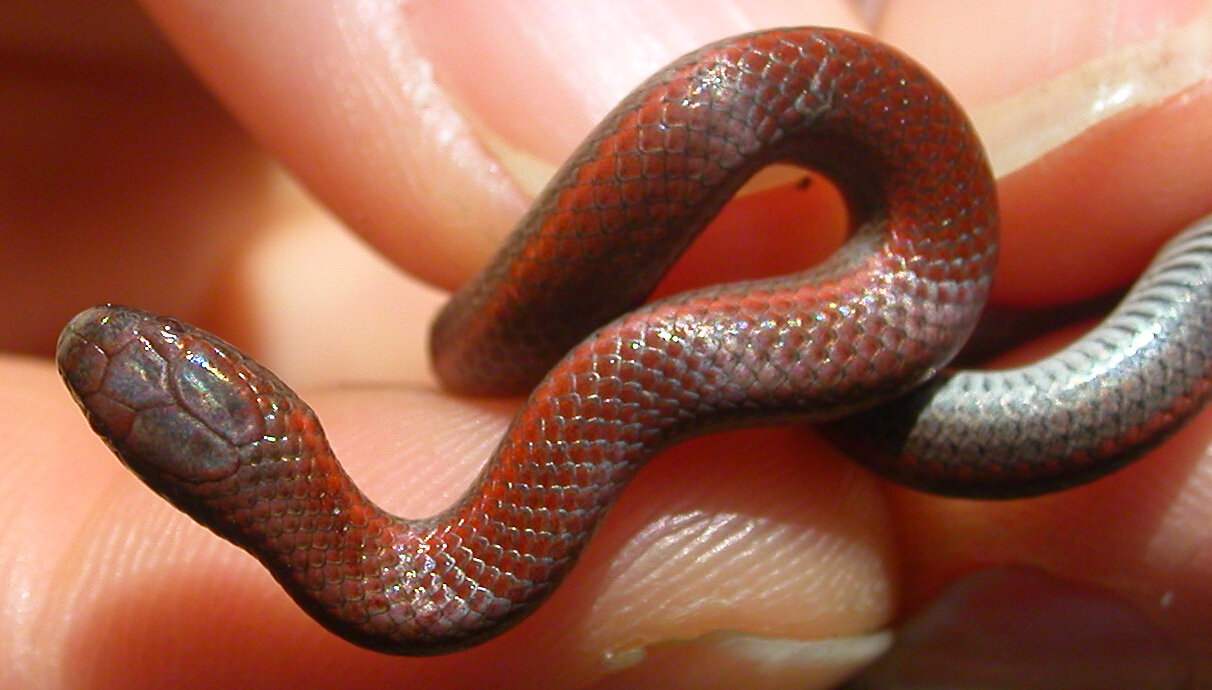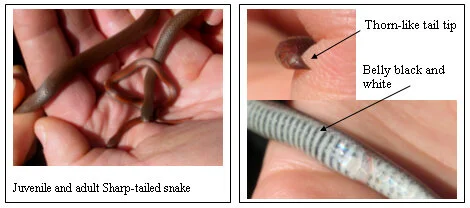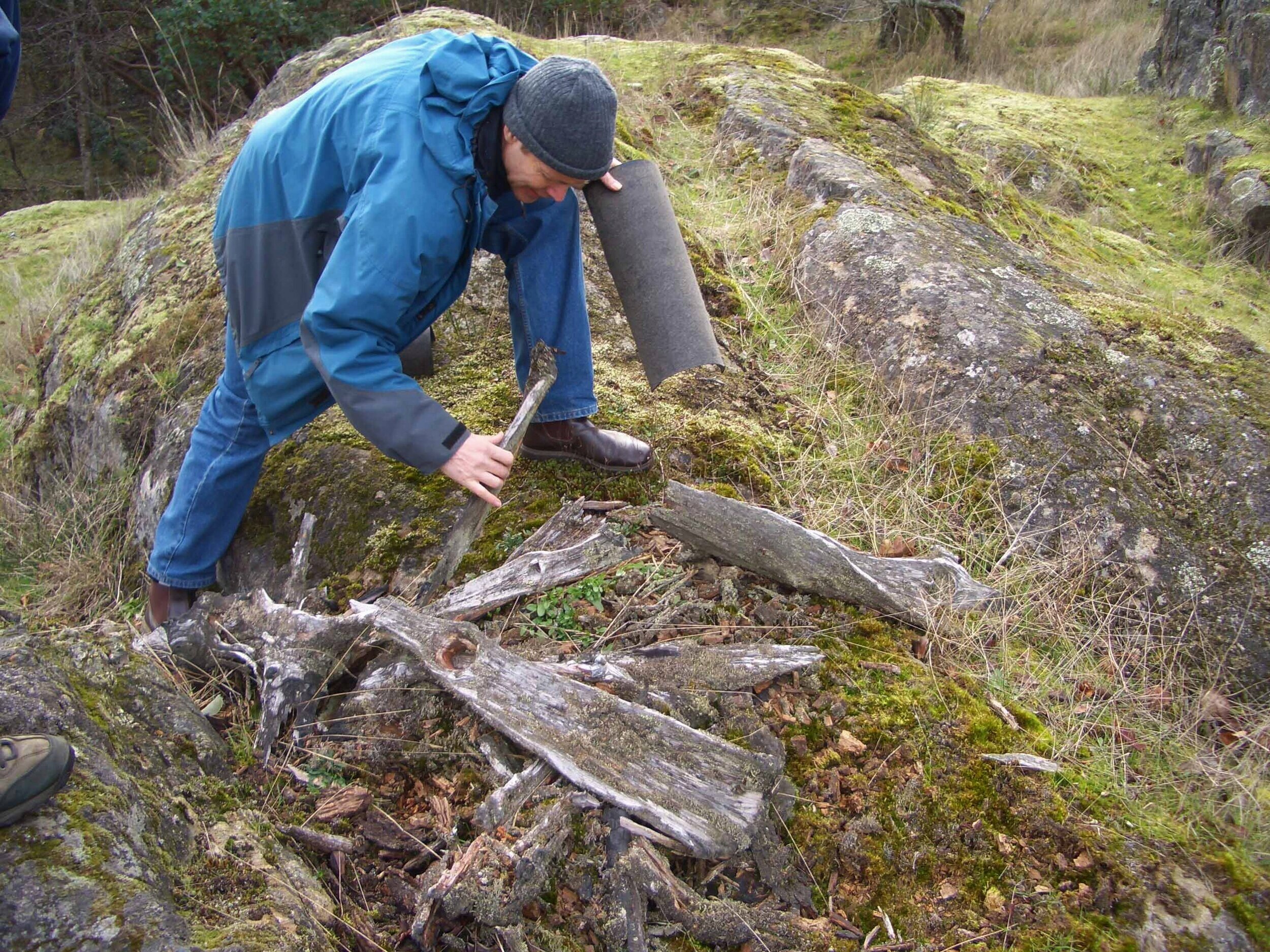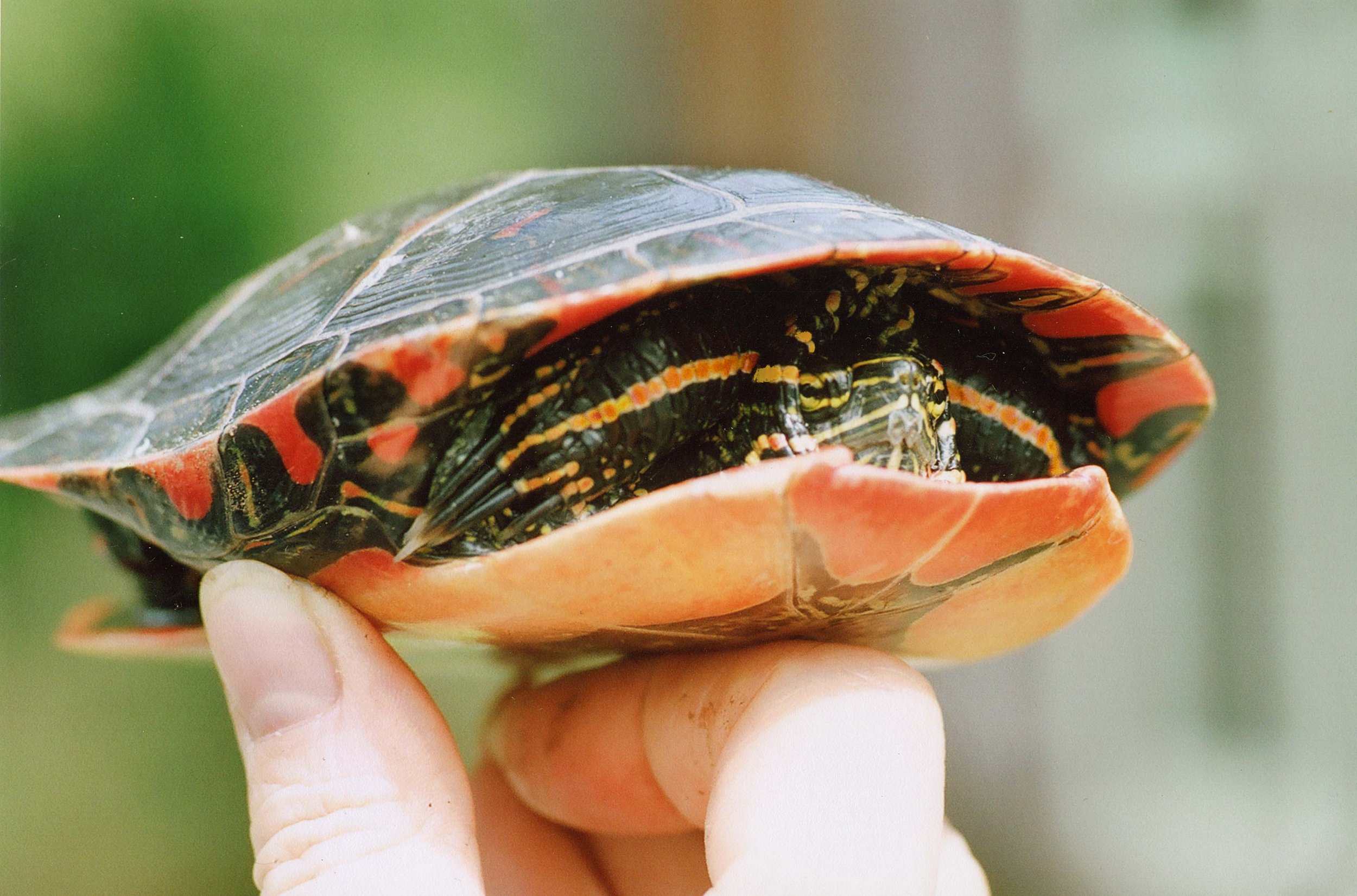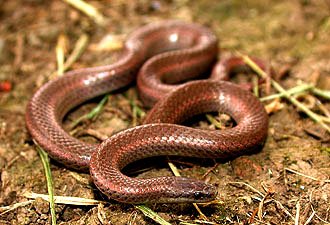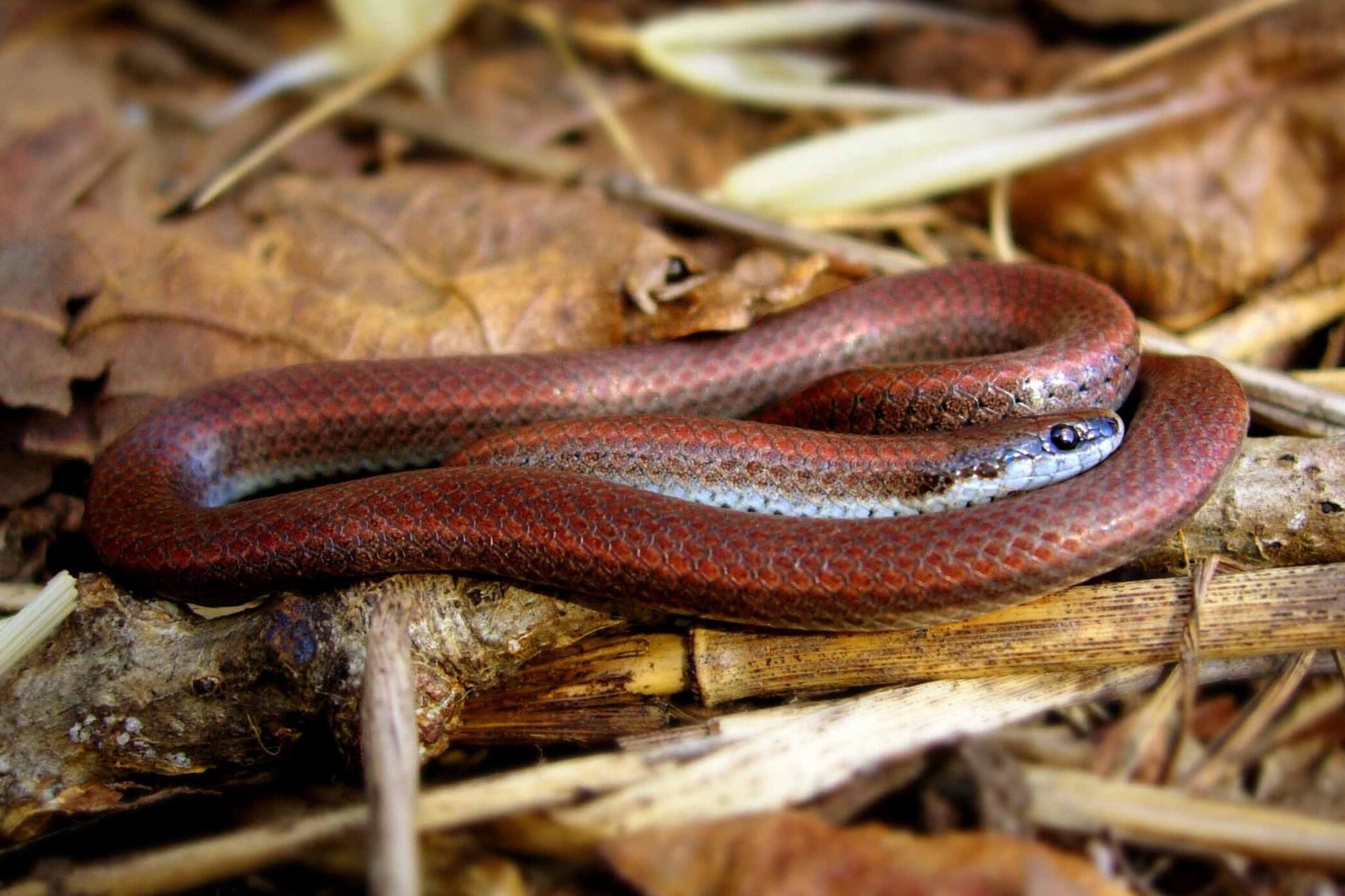
Sharp-tailed Snake
(Contia tenuis)
Photo: Christian Englestoft
This tiny snake is mysterious, harmless, and needs our help!
COSEWIC Status: Endangered
SARA Status: Endangered
Provincial Status: S1S2
BC List Status: Red (Candidates for- Extirpated, Endangered, or Threatened)
The Sharp-tailed Snake is the smallest of the 4 species of snakes on Vancouver Island (the other 3 all being varieties of Garter Snakes). These elusive reptile’s range in Canada is confined to southeast Vancouver Island, some of the Gulf Islands, and one location in the Pemberton area on the BC Mainland. The Sharp-tailed snake is an endangered species threatened by habitat degradation and alteration, most notably from development.
Distribution and Habitat
In Canada, their known distribution is confined to southeast Vancouver Island, some of the Gulf Islands, and one location near Pemberton. There are only 17 known populations within these regions.
Sharp-tailed snake habitat includes Garry oak and drier Coastal Douglas-fir ecosystems, habitats that are themselves threatened due to land-use change, such as development. They are usually found in or nearby rocky outcrops and hillsides with a south-facing orientation to provide warmth for these poikilothermic (i.e. cold-blooded) creatures to thermoregulate. They also prefer locations with considerable cover, such as rocks, debris, leaves, decaying logs, etc. Specific snake homes are called hibernaculums!
Threats
Sharp-tailed Snakes live in Garry oak and drier Coastal Douglas-fir ecosystems, habitats that are themselves threatened. Land development to accommodate the increasing human population threatens Sharp-tailed snakes’ habitat and thus their existence. Cars, cats, pesticides, weed-eaters, and loss of sunny micro-habitats also threaten these rare snakes.
But there’s hope!
The good news is that "Sharpies" and humans can co-exist if landowners take a few simple precautions. These include leaving natural covers and hiding places, controlling invasive plants, providing a pesticide-free environment, and protecting south-facing slopes. Because there are no legal requirements to protect endangered species on private lands, voluntary stewardship by landowners is critical for habitat protection.
Identification
Size: Adults are 20-30cm, while juveniles hatch at 10cm.
Colour: Reddish or greyish brown. Juveniles usually more red.
Distinguishing features: Sharp/thorn-like tail tip, white belly with black stripes, smooth body scales.
For more information about identification, visit: http://www.env.gov.bc.ca/wld/documents/shtsnake_IDguide_web.pdf
Behaviour
The Sharp-tailed Snake is a mysterious reptile because they enjoy warming up under rocks or debris, instead of in direct sunlight like most reptiles. Their small size and secretive nature makes them difficult for biologists to study. Therefore, there’s a lot we don’t know about them.
They likely mate in the fall, hibernate through winter, then in spring females lay up to 9 eggs. They feed primarily on small molluscs, such as snails and slugs, and probably hunt at night. Many animals prey on these little snakes, including birds, garter snakes, raccoons, mink and shrews. When a Sharp-tailed snake feels threatened, they curl up into a ball and use their pointed tail as a weapon against predators - but don’t worry, they can’t harm humans.
What does HAT do to protect Sharp-tailed Snakes?
Since 2005, HAT has worked with private and public landowners from Sooke to Galiano Island to identify Sharp-tailed Snake populations and find ways for land owners to conserve the vanishing habitat that these small, harmless reptiles require.
HAT meets with private landowners with potential habitat for Sharp-tailed Snakes on their property. We help them begin monitoring for Sharp-tailed Snakes, and also teach them about the critical habitat features that Sharp-tailed Snakes rely on. We will help the landowner identify these features on their property, and work with them to find ways to conserve these features.
HAT also works with public landowners and owners of working landscapes in our region. In addition to setting up monitoring programs, we help these landowners create management plans and train staff to help conserve Sharp-tailed Snake populations.
By conserving Sharp-tailed Snake habitat, participants are also helping to protect the habitat of over 100 other species at risk, ranging from plants to birds. These species all rely on the same, rare, Garry Oak associated ecosystems that are unique to southeast Vancouver Island and the Gulf Islands.
The Salt Spring Island Conservancy has a tool to help you do your own Virtual Habitat Assessment for Sharp-tailed Snakes. If your property has potential habitat for Sharpies, and you are interested in participating in our conservation program, please contact us!
In areas where Sharp-tailed Snakes are found, HAT works with landowners to protect the snakes' habitat for future through voluntary, non-legal agreements and voluntary, legally-binding agreements such as conservation covenants.
What can you do to help?
In your backyard:
Leaving natural areas for wildlife in our backyards is important for all species, including Sharp-tailed Snakes. If you live in an area that has south-facing rocky slopes, Garry oak or arbutus trees, or rocky outcrops, then you have potential habitat for Sharp-tailed Snakes, as well as many other species at risk. Please leave these particularly sensitive areas as natural as possible.
Sharp-tailed Snakes are also sensitive to the use of molluscides and slug baits. While newer slug baits are generally much less toxic, they still pose risks to the small meadow and forest slugs that are inadvertently attracted to them. These slugs do no damage to your garden, and are the primary food source for Sharp-tailed Snakes.
Get involved with HAT:
To get involved with us, please click here.
Sharp-tailed Snake FAQs
-
Adult Sharp-tailed Snakes are notably smaller than all three Garter snake species found on Vancouver Island. They only reach 30cm in length while Garter snakes can reach from 66cm-130cm in length, depending on the species. However, young Garter snakes can be the same length as adult Sharp-tailed snakes, which is where further identification comes in.
Sharp-tailed snakes have a sharp, horn-like tail which Garter snakes do not have. They also have smooth scales and black stripes along their underside, unlike Garter snakes which have keeled scales and less defined striping. Garter snakes also have long, narrow stripes along their mid-back which can range from different colours and vibrancy.
The BC Ministry of the Environment’s Sharp-tailed Snake Identification Guide is an excellent resource for differentiating between Garter snakes and Sharp-tailed snakes. If you have a photo of a snake you are having difficulty identifying, please email it to hatmail@hat.bc.ca.
-
No, Sharp-tailed Snakes are harmless. They have no venom and will not bite if disturbed. Unlike Garter snakes, "Sharpies" will not try to escape when found, but instead typically coil up and remain motionless. They have been observed to use their tail to poke predators, however, this won’t hurt humans.
-
Try to snap a photo of the snake and record the location, date, and time of your observation. Email us this information at hatmail@hat.bc.ca. Your observations are important for monitoring these Species at Risk populations and distributions!
Looking for more information and resources?
Check out these resources for more information about Sharp-tailed Snakes:
Government of Canada Species At Risk (SARA) Sharp-tailed Snake Profile
Government of Canada Sharp-tailed Snake Recovery Plan (2020)
Committee on the Status of Endangered Wildlife in Canada (COSEWIC) Assessment and Status Report on the Sharp-tailed Snake (2009) (pdf)
BC Ministry of Environment Recovery Strategy for the Sharp-tailed Snake (Contia tenuis) in British Columbia (2008) (pdf)
The Salt Spring Island Conservancy also has a Sharp-tailed Snake Habitat Assessment tool to assess your own property's Sharpie potential.

